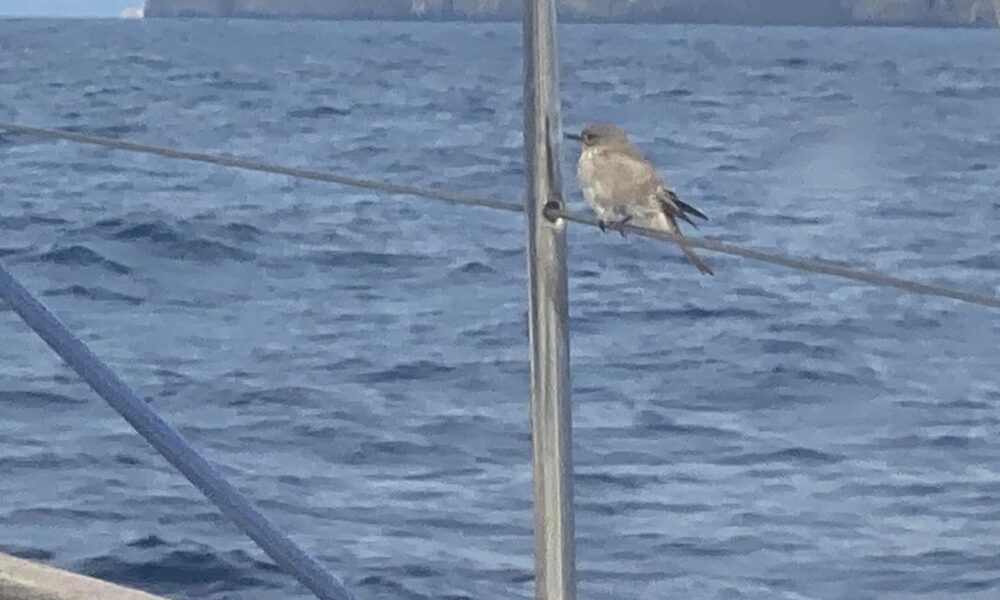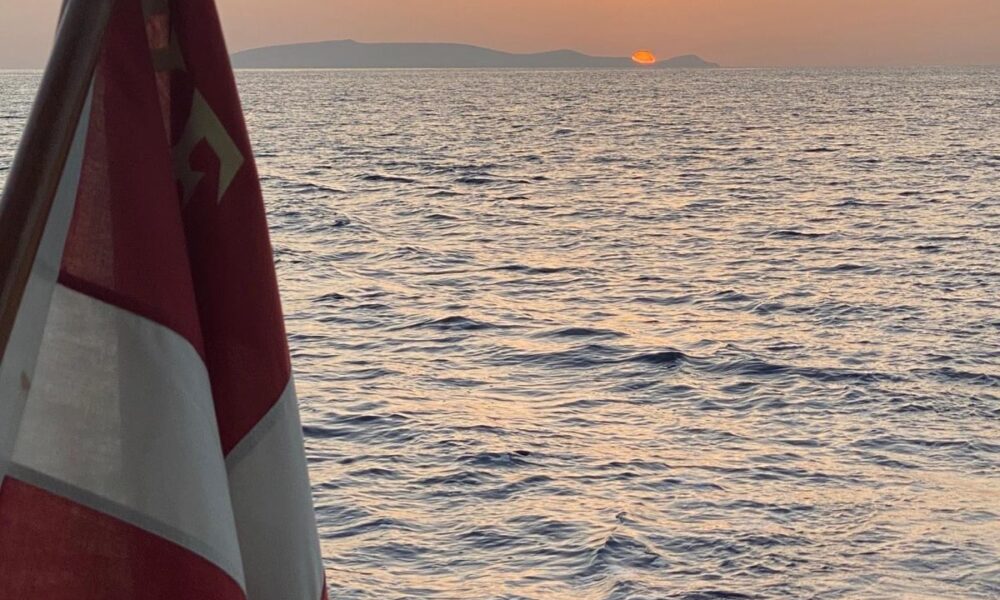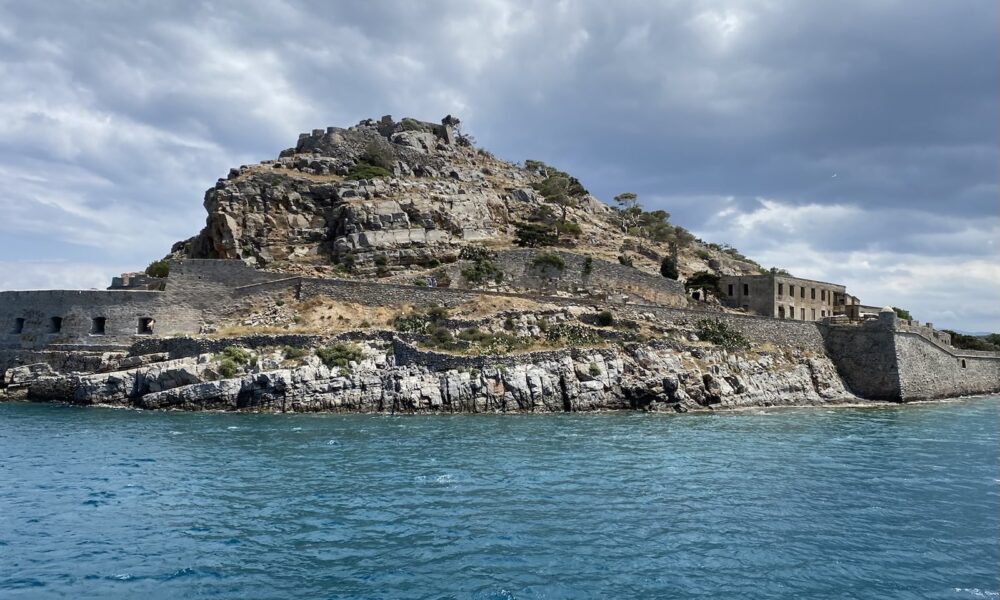
Stowaway on Ronja
36° 8’ 35’’ N, 22° 59’ 55’’ E
Stowaway on Ronja
We haven’t encountered boat refugees yet.
But a bedraggled little sparrow landed on Ronja’s deck today during a rain shower. The sparrow was drenched by rain and saltwater. It huddled, tried to get accustomed to a boat’s movements in high seas, and called – according to the skipper’s wife – for its mother.
After seven hours of sailing, we reached the island of Khytera, and the sparrow flew on in life with a farewell and thanks.

Rat war all night! No thanks.
35° 23’ 3000’’ N, 25° 02’ 5200’’ E
Sailors often seek advice from each other online. As we consider spending a night in a bay on the island of Dhia, north of the main city of Crete, Heraklion, we come across this warning from a British sailor:
“The anchorage is beautiful, and the water is crystal clear. But be careful about spending the night at anchor. The island is infested with rats, and you can hear them screaming all night. Don’t attach a line to the shore, stay far from the coast, and don’t cook food with too much flavor. Rats are excellent swimmers.”
Perhaps this is just a sailor’s tale. There is no quality control even on this part of the internet.
Nevertheless, we choose to sail past Dhia and find another place to drop our anchor for the night.

Morning Coffee and Backgammon
35° 11’ 25.0800” N 25° 42’ 55.0700’’ E
Once, Agios Nikolaos was a small fishing village on Crete. Today, like many other fishing villages, it has been discovered by thousands of tourists, including a large number of cruise ship tourists.
Nevertheless, the town has retained its charm. The locals still play a significant role in the town’s atmosphere. Elderly Greek men gather every morning at the local café, where they enjoy their morning coffee and play backgammon with great concentration and perhaps a sip of ouzo.
The old men were sitting there when we left the good ship Ronja in May, and they are still sitting there now as we have returned in September.
Continuing from Agios Nikolaos, we pass by a small rocky island, Spinalonga, which served as a leper colony for 54 years from 1903 to 1957. The Cretan state forced 251 lepers to live on the island. The island had two entrances, one of which was the entrance for the lepers, a tunnel known as “Dante’s Gate.” Upon arrival on the island, the lepers received food, medical treatment, and a pension, which had previously been unattainable for Crete’s lepers, who primarily lived in remote caves, far from society.
Victoria Hislop has written a heart-wrenching novel, “The Island,” about life on Spinalonga during this period.